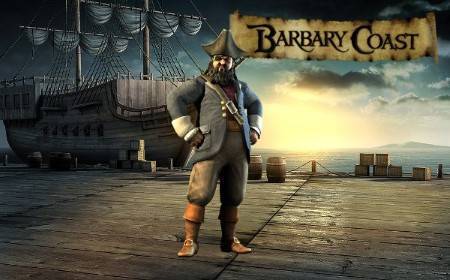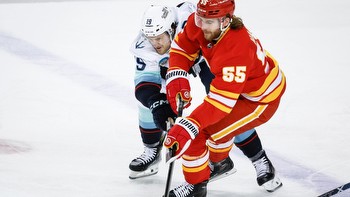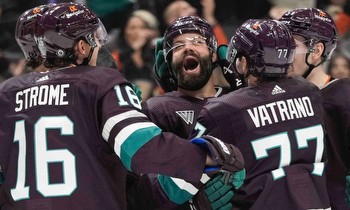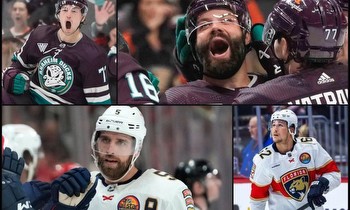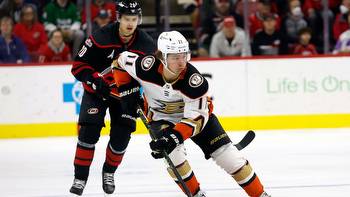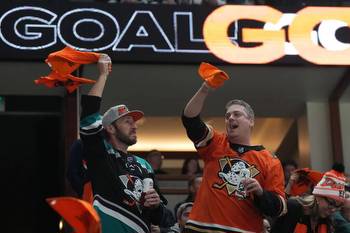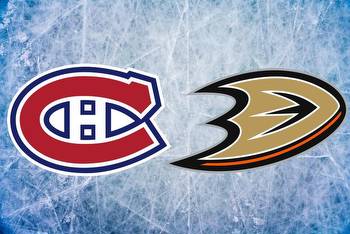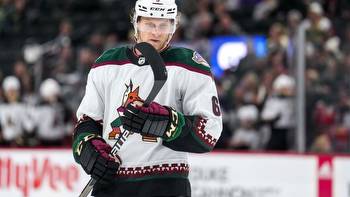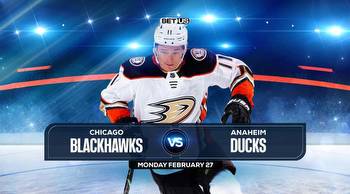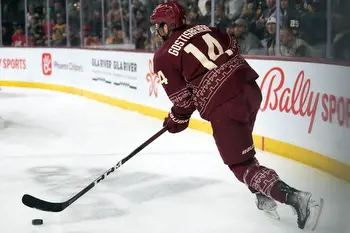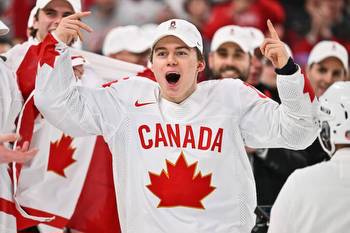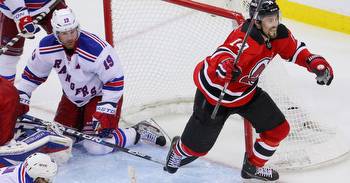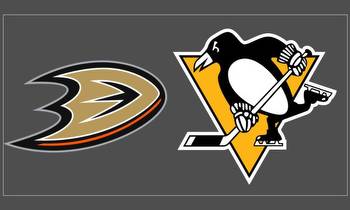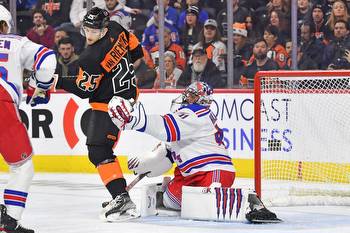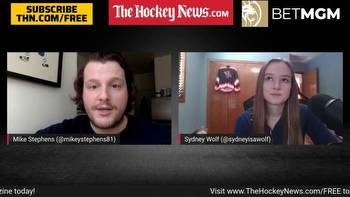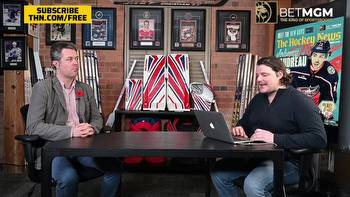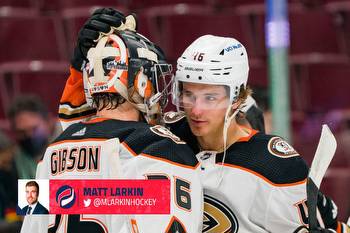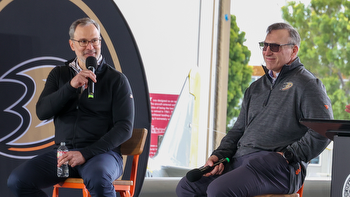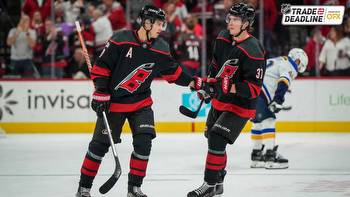John Klingberg, the Ducks, and the can’t-miss arrangement that … badly missed
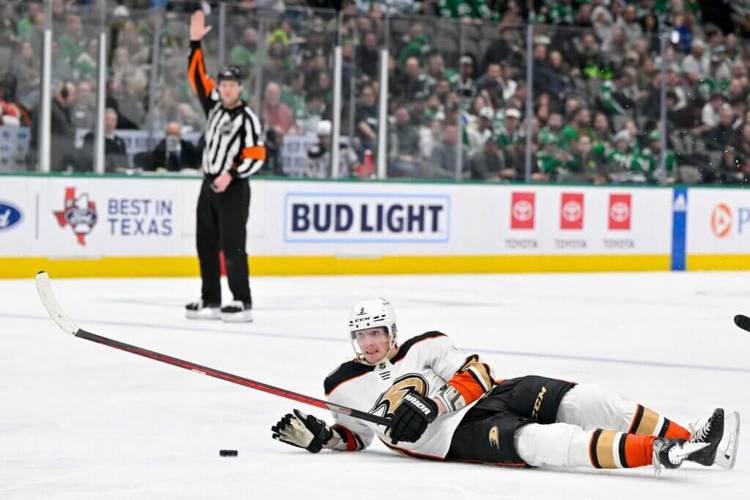
ANAHEIM, Calif. — Ducks general manager Pat Verbeek stepped up the plate last summer and took a big cut. No one blamed him for his swing to get John Klingberg to Anaheim, because he had a ton of salary-cap space and needed to fill out a defense corps that no longer had Hampus Lindholm and Josh Manson.
The commitment in free agency was manageable. One year, $7 million. Hey, it wasn’t my money. Or yours (well, not directly). And while Klingberg’s deal initially had a no-trade clause, that was modified on Jan. 1 to a 10-team list he submitted. At the time, the thought was, if it works, great. Maybe he has a restorative season and Anaheim surprisingly morphs into a playoff contender, and maybe the two sides even consider extending his stay. If it doesn’t, there’s virtually no harm done. The worst-case scenario, we thought, involved the Ducks flipping Klingberg for a solid draft pick before this year’s deadline, maybe even a first-rounder.
Instead, Verbeek made contact with a foul tip. Perhaps a dribbler back to the mound, which is worse because it ends the at-bat. Verbeek had one of the NHL’s last deals before Friday’s deadline, when he sent Klingberg, the 30-year-old defenseman, to the Minnesota Wild for a fourth-round pick, defenseman Andrej Sustr and unsigned prospect Nikita Nesterenko.
A weak swing like that can be damaging for an NHL general manager, especially one like Verbeek, whose goal is to dig his team out of a major rebuild and put it on the path to respectability and winning. It is not that Anaheim’s boss hasn’t stockpiled some quality assets. He has many quality young players, plus 12 picks over the first three rounds in the next two drafts.
But still, it’s hard to fathom how wrong this investment in Klingberg went. Terrible, really. A puck-mover with sublime offensive instincts netted only a fourth-round pick in 2025 (yes, 2025!). To use a seaside golfing analogy, Verbeek shanked his drive into the Pacific Ocean. Successful teams with staying power still have to mine the lower rounds for projectable talent, so Verbeek can take advantage of that pick. But, right now, the best part of the Klingberg deal is Nesterenko, a Boston College forward prospect and a sixth-round choice in 2019 who wasn’t going to sign with the Wild.
The biting breeze you now feel in a colder-than-normal Southern California winter comes from the swing and miss by Verbeek. Fortunately, he didn’t strike out by failing to make a trade, or the Klingberg experiment would have been a complete waste.
This is still recoverable. Shortly before the Klingberg trade, Verbeek did fairly well to grab a 2024 third-round pick from Pittsburgh for another pending UFA blueliner, Dmitry Kulikov, and he can use grinding forward Brock McGinn, also acquired from the Penguins, as a bottom-six piece until the 2025 deadline. But to get that, he had to eat half of Kulikov’s remaining salary and cap hit, along with taking McGinn’s two remaining seasons at $2.75 million. The cap number is more meaningful than the minimal payout left to Kulikov, but Verbeek still has what CapFriendly estimates to be more than $42 million in space heading into 2023-24.
But what of this supposedly fruitful 2023 draft? The Ducks got nothing else before the deadline. That was what Klingberg was supposed to bring. And the hope back in July was that he could bring back another first-rounder to go with the Ducks’ own potential top-three choice, which could even turn out to be No. 1 overall. Even as Klingberg struggled and the Ducks’ season trudged along, hope remained that Verbeek could squeeze out a second-rounder for Klingberg. Maybe a third for this draft.
That’s how bad things went. Anything Klingberg does for the Wild might be better than his five months in Anaheim. He did recover from his slow start to put up eight goals and 16 assists in 50 games. But he had a minus-28 rating, the worst on a team full of negative double-digit numbers, and possessed atrocious underlying metrics (42.85 CF%, 165-284 on-ice disparity in high-danger chances for and against). Perhaps that won’t matter on a Wild team that’s much better and usually plays a sound system that can better hide his deficiencies.
The whole thing in Anaheim was a large-scale failure, with several targets. It’s a failure on Klingberg’s part, as he started horribly and lost key power-play time to Cam Fowler, the area in which he was supposed to thrive. It’s a failure on coach Dallas Eakins’ part to get the most out of the defenseman and hide what he’s deficient at, areas that were frighteningly glaring on the leakiest team we’ve seen in some time. Those elements must be factored into Verbeek’s failure to get any kind of decent package for him. Sustr is a wonderful, worldly person, but he’s going to AHL San Diego and will, at best, plug a spot in the Anaheim defense for the second straight year as the Ducks try to counter Chicago’s full-court press toward Connor Bedard.
Shortly after the deadline, Verbeek said the Ducks “were looking at two or different scenarios” on Klingberg before executing the deal with Minnesota. He noted that there was “haggling” with the final hour. Both parties got it cleared through NHL Central Registry at 11:58 a.m. Pacific, two minutes before the deadline.
But the appearance is that Verbeek was reduced to taking the best offer he could get. And it’s undeniable that the return fell far short of what was once imagined. And now, Klingberg faces the likelihood of walking into free agency this summer with his value greatly diminished.
“I think John and I could say we’re both disappointed in the sense (of how the season played out),” he said. “When we spoke today, he was disappointed with how he played here. I can say he was disappointed. But you know what? We both gave each other a shot. Stuff like this happens. It’s not an easy game. You can kind of throw your best game out there and sometimes it doesn’t work out.
“I wish John the best. I hope does well in Minnesota.”
Now, Verbeek will get to work on the final weeks of the season, as he gets back to scouting and planning for the summer. It isn’t going to be pretty on the ice, but it mostly hasn’t been anyway. Backup goalie Anthony Stolarz is done for the season with a lower-body injury. But that will mean more action for Lukas Dostal as he prepares to take over next season, with Stolarz set to be a UFA.
The Ducks also will be without forward Adam Henrique, their 19-goal scorer whose absence since Feb. 21 due to an MCL sprain likely cooled the legitimate interest trade there was in him. But the Ducks weren’t set on moving him unless a terrific offer came along. Henrique can be back next season and maybe give Anaheim enough effectiveness to be a quality deadline piece next spring since he will be in the final year of his contract.
Basically, there is little more to look forward to with the Ducks, other than to see if they will beat out a completely stripped-down Chicago club for the worst record and the best odds to get Bedard. Chances aren’t they won’t, given how bad the Blackhawks’ roster is. Otherwise, Ducks fans are left to appreciate Troy Terry, watch to see if Trevor Zegras adds more substance to his stylish game, and dream of a day when the Ducks might become Mason McTavish’s team.
Whatever excitement was held months ago regarding the trade deadline for Verbeek and the club fizzled like a balloon when the air escaped. It was a huge disappointment, to apply the GM’s words.
